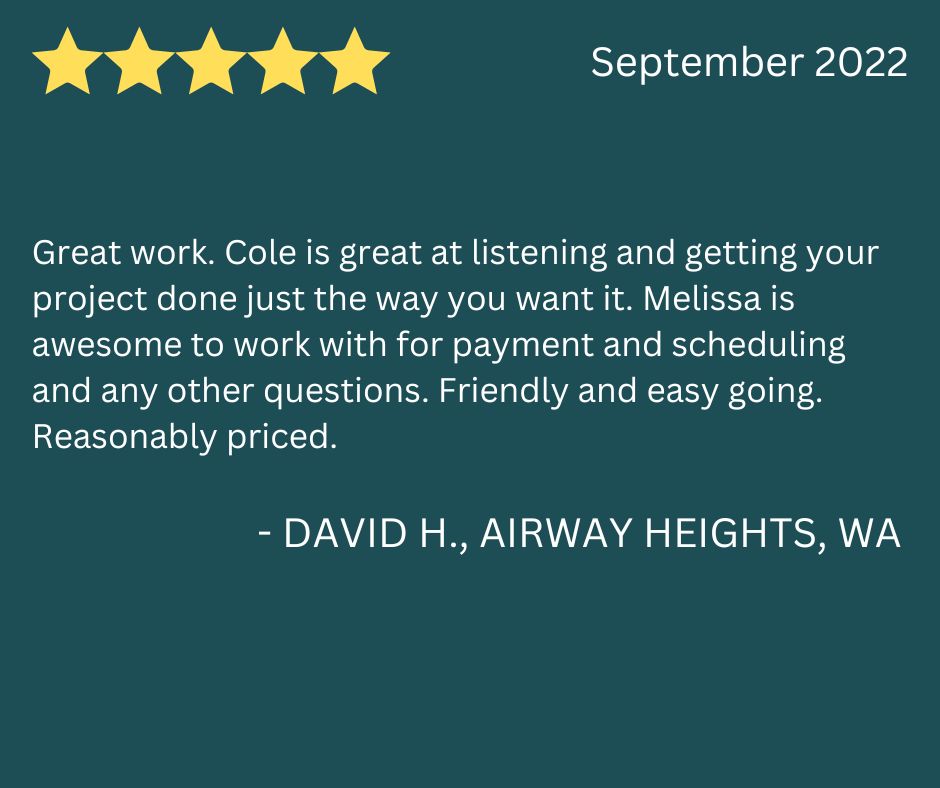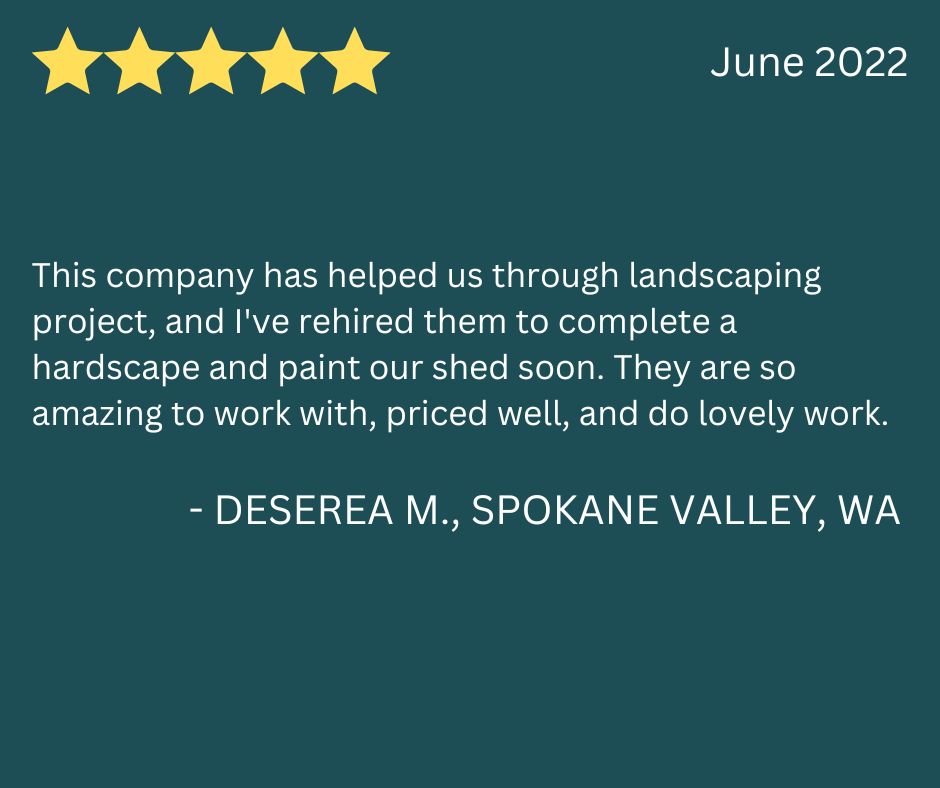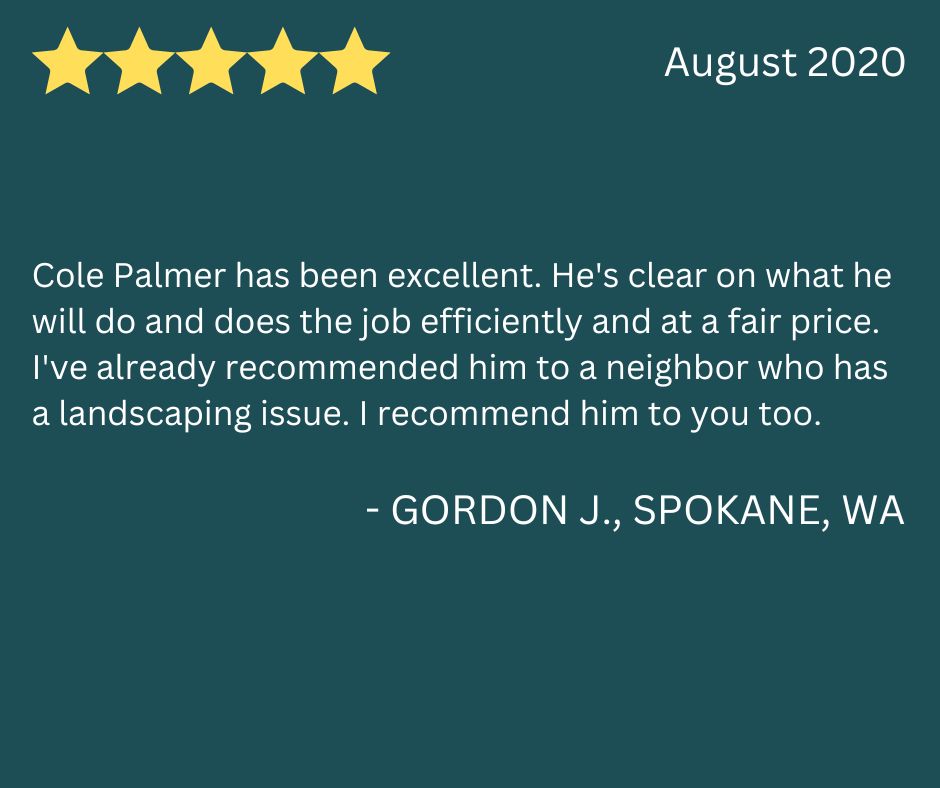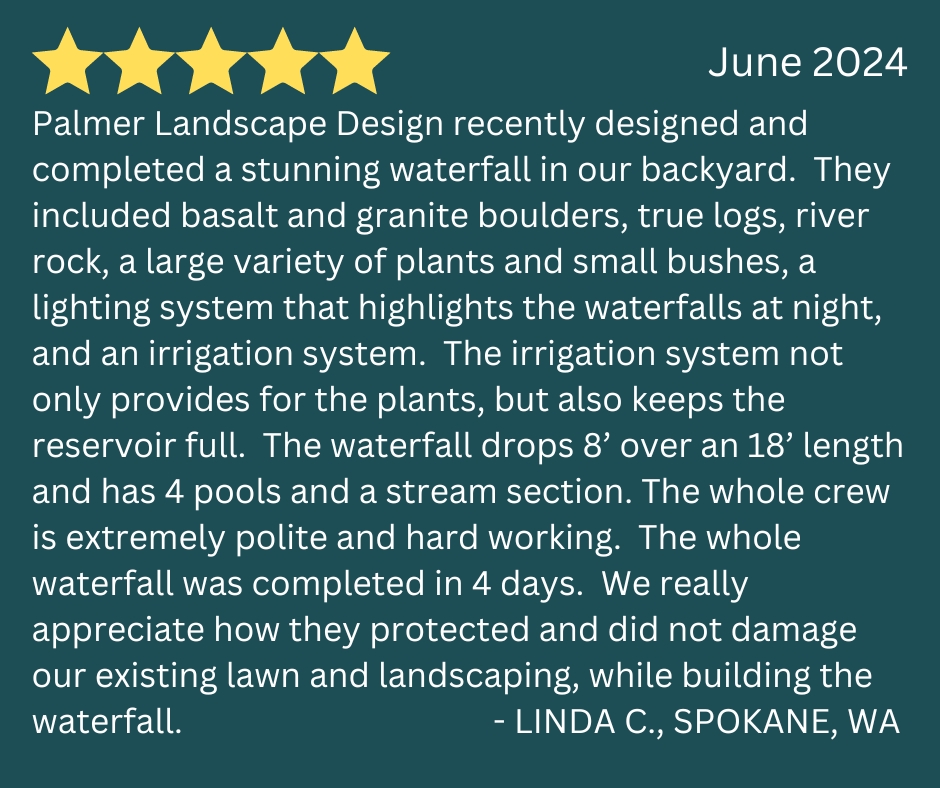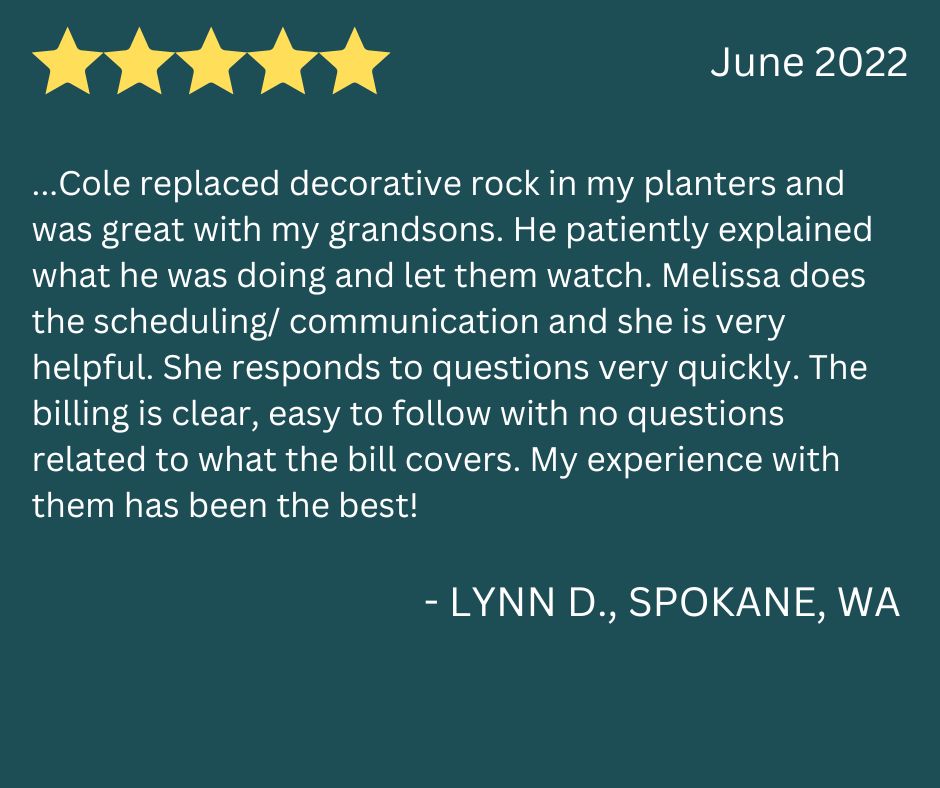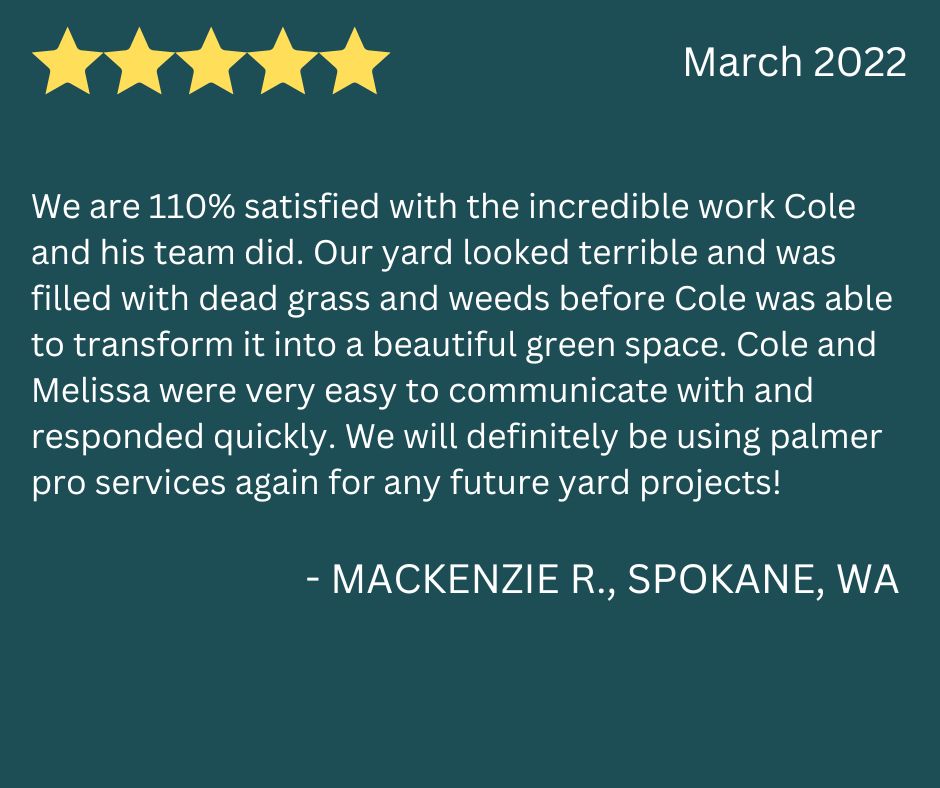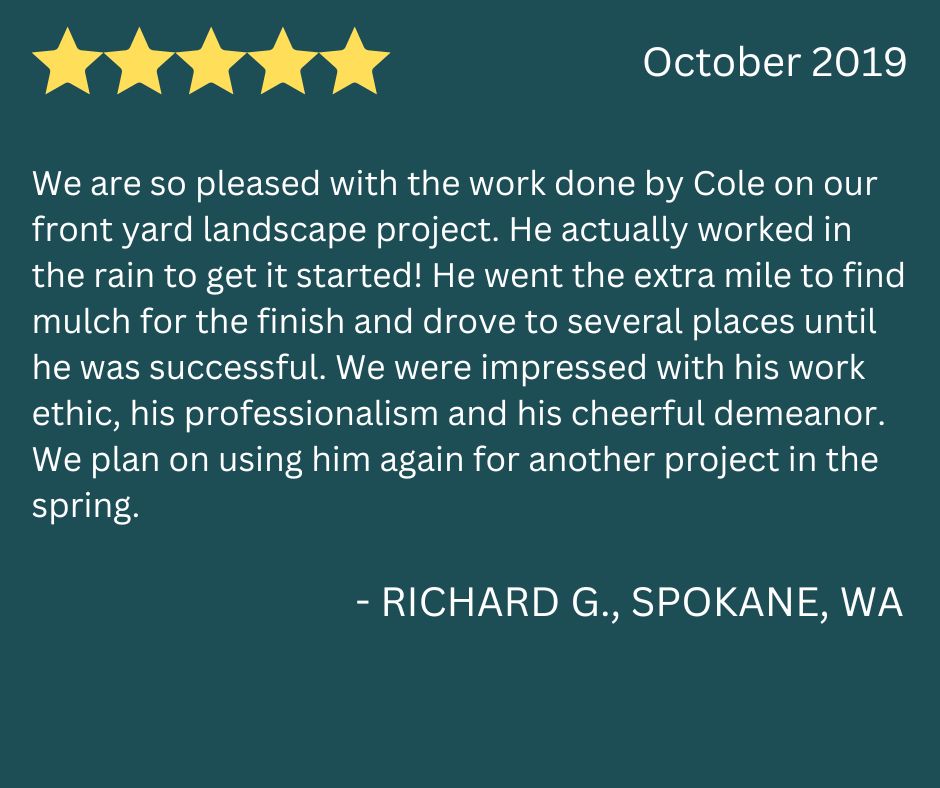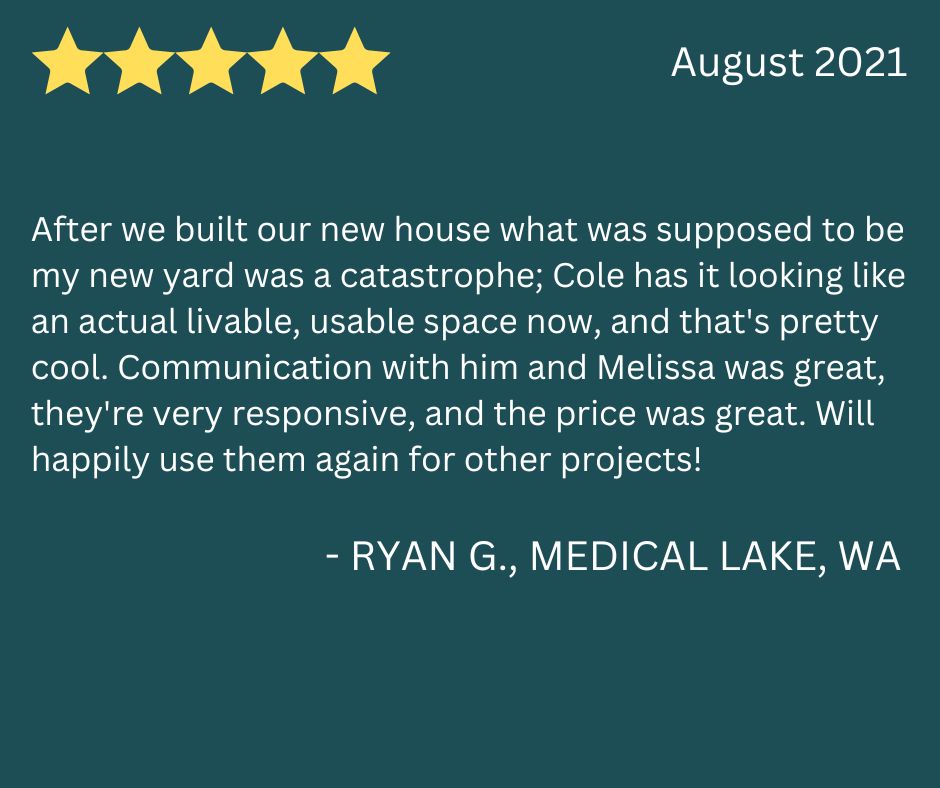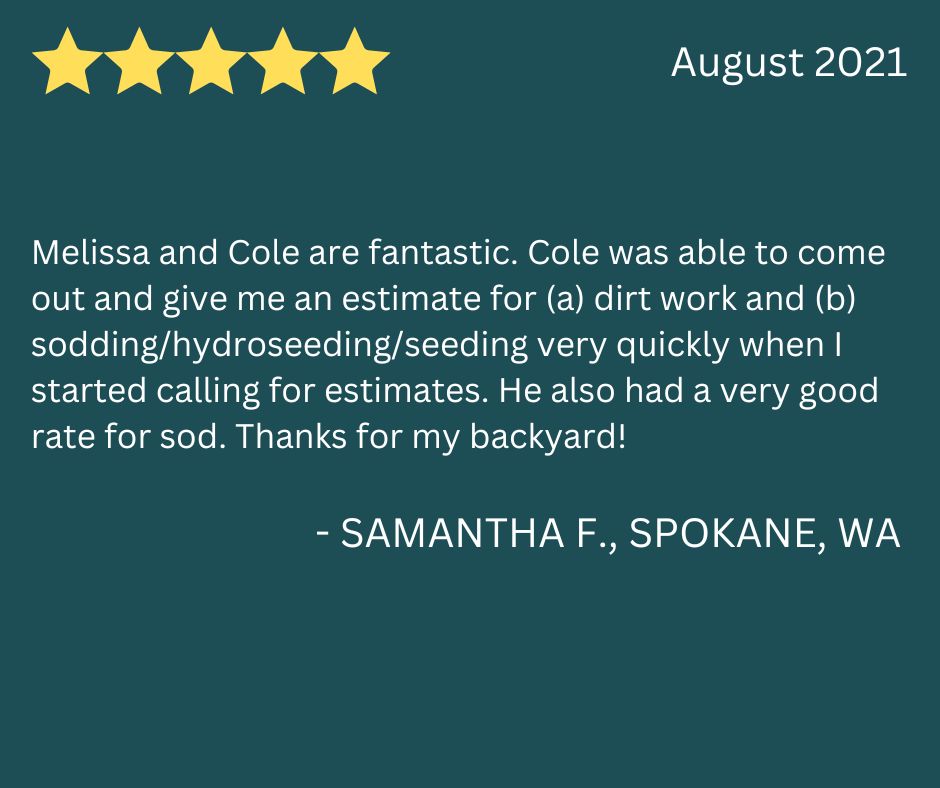Landscaping, Sod Installations, Water Features, and Hardscaping Services in Spokane WA
Why Hire Us?
We are not just landscape contractors – we are landscape artists inspired by the beauty of creation. We use that passion to create beautiful works of art, with your home as our canvas. Our team of experienced designers and installers work with you to create one-of-a-kind outdoor spaces that are both functional and aesthetically pleasing. Whether you need a simple garden redesign or a complete overhaul of your outdoor space, we have the skills and expertise to bring your vision to life.
Our Landscaping Services
Landscape Design: We can help you design a unique and beautiful functional space that meets your specific needs and preferences. From plant selection to landscape planning and layout, we will work closely with you to create a design that reflects your style, personality, and budget.
Water Features: Want to bring a piece of nature to your backyard? We can create your own personal oasis with a pondless waterfall. Want to enjoy the fullness of nature? Let us build a custom pond for you to experience nature right outside your door. Want to add a touch of elegance and tranquility to your space? Our fountains and fountainscapes can do just that, no matter how small of an area you are working with.
Softscaping: We are highly experienced in sod installation and can turn your dirt and weeds into a lush instant lawn. Whether you have a new construction build or a tired old lawn, we can make it beautiful with new sod. We also carve out new landscape flower beds, handle mulch delivery, and install plants.
Hardscaping: We can add hardscaping features such as paver patios, walkways, block retaining walls, boulder retaining walls, stone steps, and fire pits to enhance the functionality and beauty of your outdoor space.
At Palmer Landscape Design, we pride ourselves on providing exceptional customer service. Our team is dedicated to ensuring that you are completely satisfied with our services, from the initial consultation to the final project walk-through.
If you are ready to transform your outdoor space into a beautiful oasis, contact us today to schedule a consultation. We look forward to working with you!
See what our customers are saying

Landscaping
We specialize in landscape transformations! We can start from bare dirt of new builds, or redesign your existing property. We can make your dream a reality in your budget!
Design
From lush gardens to serene water features, we have the ability to bring your vision to life on paper with a design rendering.
Water Features
Bring life into your backyard with a breathtaking water feature! We can install ponds, pondless waterfalls, and fountains.
Hardscaping
Transform your outdoor space into a stunning, functional area! We specialize in hardscape and paver installations that enhance the beauty and usability of your property.




